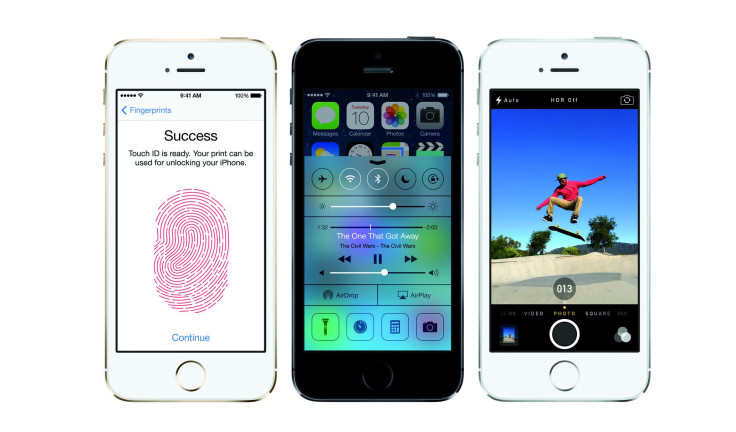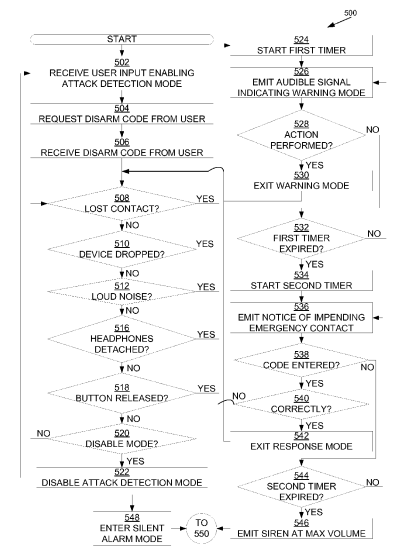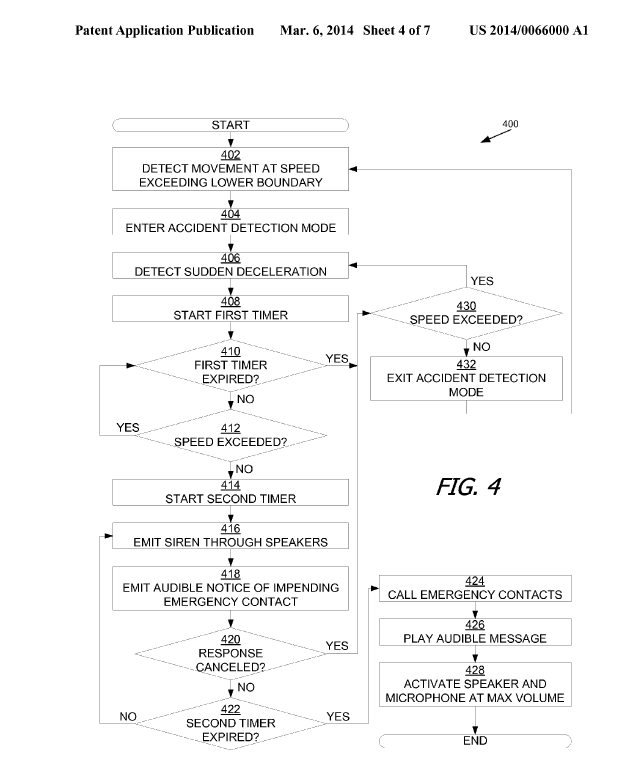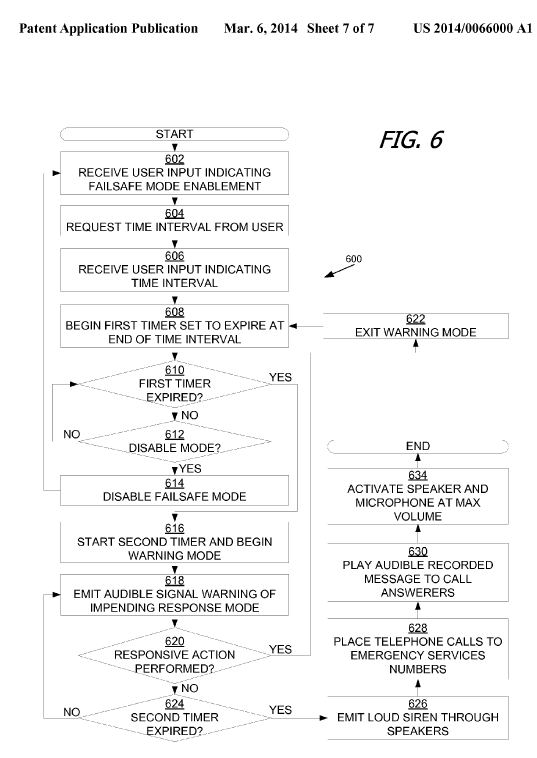Apple Patent Rumors: New Filing Filing Reveals 'Attack And Accident Detection Mode' For iOS Devices [PHOTOS]

Your iPhone could eventually call for help in an emergency if Apple Inc. (NASDAQ:AAPL) implements features described in a newly published patent filed with the United States Patent and Trademark Office, or USPTO.
On Thursday, March 6, the USPTO published a patent filing by Apple that describes a new way for mobile communication devices to be placed into an “attack detection mode.”
The full patent filed by Apple appears to add an additional role to an iPhone, smartphone or other iOS based hardware -- a fail-safe emergency device. According to the abstract of Apple’s patent filing titled “Mobile Emergency Attack and Failsafe Detection,” when a device is placed into “attack detection mode,” various conditions would prompt the contact of emergency services.
The patent describes several situations where a device such as an iPhone or iPad would call emergency contacts or emergency services including events such as a fall, or even not interacting with a device after a certain interval of time.
Where would Apple want to implement such a patent? Apple describes several applications for an “attack detection mode,” including monitoring those with health conditions, automotive accidents, and even aiding in situations where one is being “accosted by ill-intentioned people.”
Apple’s patent illustrations demonstrate how it would implement such a feature. After installing an update containing the “attack detection mode” software, a user of such a device (such as an iPhone) would be prompted to enable emergency services features and then enter emergency contact numbers that would then be stored both in system memory and uploaded into a “central repository.”
Once implemented, Apple describes several conditions where its emergency services feature could be activated.

One method illustrated involves using attack detection mode in a way similar to how home security systems work. A user would enable “attack detection mode,” which would then prompt the user to enter a disarm code. From there, the device would check for multiple events to occur, including dropping the device, a loud noise, release of a button or other method.
Should one of those conditions happen without a disarm code being punched in, the device would then initiate a countdown with an audible warning noise before making a call to emergency services.

The same method could also be initiated via silent alarm as well.
Another method described by the patent demonstrates the emergency services feature it would perform in the event of a car accident. In this implementation of filed patent, the device would enter an “accident detection mode,” which would trigger if sudden deceleration was detected. If triggered, sirens would be emitted through the device and the emergency contacts would be notified after a brief warning.

The third implementation of Apple’s patent describes a “Failsafe Emergency Detection” method that would require a user to periodically interact with the device at certain intervals to prevent emergency contacts and services from being contacted.

While it’s unclear if Apple plans to implement any of these features in a future iOS device such as the rumored iPhone 6, the particular methods described in the patent filed with the USPTO fall in line with several moves Apple has made in recent months, including the hiring of health-focused scientists and engineers and the introduction of CarPlay, which integrates iOS devices with the dashboards of several new vehicle models introduced in 2014.
Apple’s “Mobile Emergency Attack and Failsafe Detection” patent was original filed on Sept. 5, 2012, with Robert D. Butler credited as the inventor.
© Copyright IBTimes 2024. All rights reserved.






















